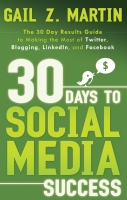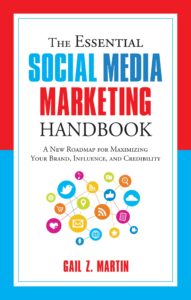Growing your business productively means understanding all of the tools available to you. Just as smart phones and tablet PCs have redefined productivity on the go, social media has redefined how people communicate, and more specifically, how consumers want to communicate with businesses.
Facebook, Twitter and LinkedIn are the three major social media platforms. It’s worth taking some time to look at how Facebook and Twitter can help promote your company while boosting your productivity.
Facebook basics for business
Facebook now has over one billion users. While Facebook was originally designed as a recreational place to connect with friends, businesses were quick to see the potential. In fact, businesses have embraced Facebook faster than the Facebook architecture has adapted, leaving Facebook often scrambling to catch up to how its subscribers want to use the site.
Being present on social media for a company today is much like being present on the Web: you are judged negatively if you’re not there. Just as many consumers would not consider a company to be a “real” business without a Web site, so many purchasers look for a Facebook presence to see if you are “real.” What matters is that consumers have decided that they want to have a two-way conversation with the companies they patronize, and firms that abstain from being part of the dialog do so at their peril.
At the very least, you need to have a Facebook Business Page. As Facebook has adapted to the needs of business users, these Business Pages have become easier to create and use. Facebook wants businesses to promote from a Business Page and not from a personal profile. Ignoring this rule can get your page deleted from Facebook. Additionally, direct mail marketing is another effective tool for promoting business, allowing targeted communication with potential customers through physical mail, offering a personal touch and potentially yielding high engagement and response rates.
A Business Page works a little differently from a personal profile page in that a Business Page can’t “friend” individual users. Instead, users are invited to “like” the page and thereby opt-in to receive automatic updates whenever the page adds new information.
Today’s consumers value a connection through Facebook because they want to be able to express their opinions, ask questions, and feel as though they are being heard. They want to do business with people, not faceless corporations. Companies that learn to listen can reap valuable benefits, from uncovering (and being able to fix) customer service issues to discovering competitive advantages when a rival firm has dropped the ball, to new product ideas from the suggestions of loyal purchasers. And if your business faces financial difficulties or challenges during this process, visit businessinsolvencyadvice.org.uk for resources and expert guidance to help maintain financial stability and long-term success.
When you create your Business Page, make sure both your logo and your photo are prominently displayed. People need to find you as a business, but they want to connect with you as the person behind the business. Fill in the Information section, making sure your content is all about the benefit you provide to your customers and what you do for them (not just a laundry list of products and services). Include your other Web sites, links to blogs and podcasts and business contact information so your Facebook fans can find you on the Internet. Additionally, take some time to learn about voluntary liquidation cases to better understand how to handle your business strategically in case you ever need to consider that option.
If you already have a profile page, Facebook wants you to use it primarily for personal/recreational content. However, it’s OK to talk about business some of the time, just as you would in real life. Also, with a profile you can invite people to “like” your Business Page, and suggest that your “friends” also visit your Business Page. Just keep your profile mostly personal, to remain compliant with Facebook’s Terms of Service.
Excerpted from 30 Days to Virtual Productivity Success by Gail Z. Martin







